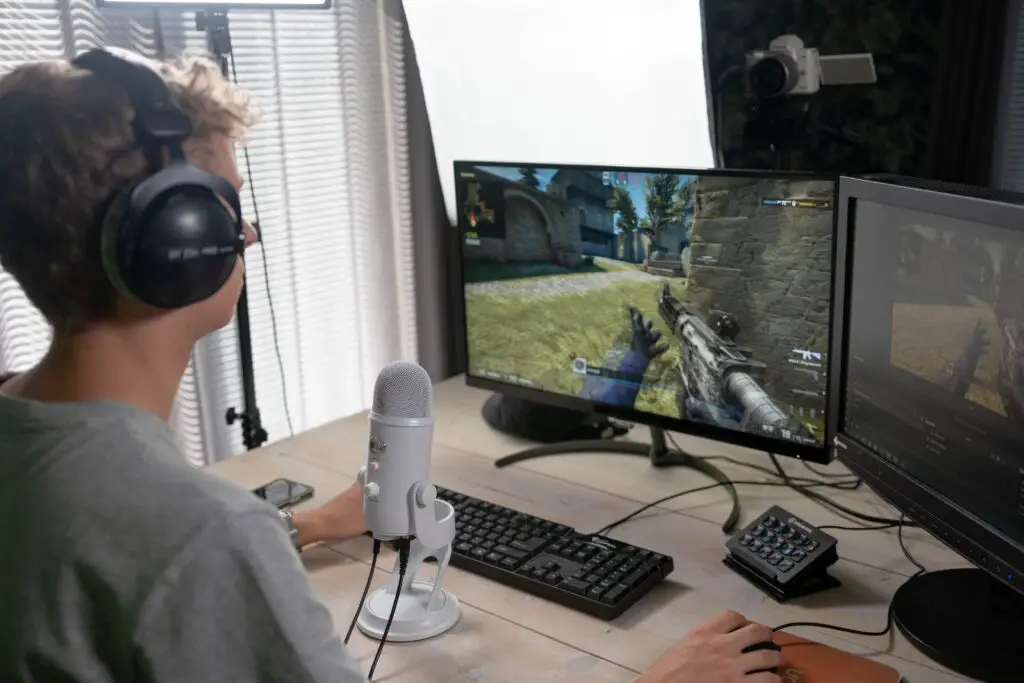Does 60Hz mean 60 FPS?

If you are new to gaming, you will notice that the terms “Hz” and “FPS” are thrown around a lot, which can be quite confusing. What do they even mean? Is it the same and if not, what’s the difference?
The two are correlated, but 60Hz does not mean 60 FPS or vice versa. “Hz” stands for “Hertz”, which is a unit of measurement for cycles per second. In this context, it refers to the display refresh rate. “FPS” stands for “frames per second” and it tells us how many frames there are in one second. More specifically, how many frames your computer is outputting.
So, how exactly are Hz and FPS related if they are so similar? Is it better to have a high refresh rate (Hz) or high FPS? What happens if one is higher than the other? You can learn all about that by reading the rest of the article. So, let’s get right to it!
Does 60Hz mean 60FPS?
Now that we know what each of the terms stands for and that they are not the same, let’s talk in more detail about them. Your monitor updates its display a certain number of times each second. For example, a 60Hz monitor will refresh 60 times in one second. We call this the monitor refresh rate.
FPS, on the other hand, has more to do with your computer hardware. Your graphics card is the main component that affects FPS, but CPU, RAM, and even storage can affect it too. Having a better graphics card will yield more FPS, but only if the CPU can keep up with it. If not, the game will stutter and you might get decent FPS but the game can feel choppy.
And even if your CPU and graphics card work well together, you still need enough RAM and fast storage to have a smoother experience with fewer frame drops. So, what is the relationship between Hz and FPS?
If your monitor has 60Hz and your computer can put out 60 FPS, that means that your computer has one new frame for Hz on your monitor. This is pretty much ideal and you should have a pretty smooth experience. But having more Hz than FPS will not increase the number of frames per second. So, having 60Hz does not necessarily mean that you have 60 FPS.
It only means that your monitor can display 60 frames per second. You can verify this by using an FPS counter that is baked into almost all multiplayer games nowadays. Try locking the FPS to 100 and then to 60 and you will see that there is not much of a difference. This may depend on the game, though, which you can read about below.
What if I Have More Hz than FPS or Vice Versa?
If you have, let’s say, a 144Hz refresh rate monitor, but your computer only puts out 60 FPS, you will have a similar experience to playing on 60Hz. However, more expensive monitors will look nicer, so it’s still a good idea to invest in a high refresh rate monitor, especially if you plan to upgrade your computer later on.
But what about those situations where you are getting over 200 FPS, but your monitor only has a refresh rate of 60Hz? Is there any benefit to that? Indeed there is, but you will also experience screen tearing. This is why the option to turn on V-sync exists. It limits your FPS to 60 so that you do not experience tearing.
If screen tearing does not bother you and you want to have a slight competitive edge in a multiplayer shooter like Counter-Strike: Global Offensive, then having the highest FPS possible is desirable. This is because, depending on the game, more FPS means that your monitor will display a smoother and more recently updated image. It also reduces input lag from your mouse and keyboard.
But again, having both high FPS and a high refresh rate is ideal. If you are a competitive gamer, consider investing in a better monitor and a faster computer to get the best of both worlds.
Is It Better to Have a High Refresh Rate or High FPS?
In an ideal world, you would have your game locked to the refresh rate of your monitor and the computer could keep up with the refresh rate. However, this is often not the case. For example, not even an RTX 3090 can output 240 FPS to a 240Hz display in AAA games. But you won’t likely need 240 FPS in an AAA game in the first place.
This is one of the reasons why eSports titles are designed to run at high FPS and do not focus on graphics as much. So, should you invest in a graphics card or a high refresh rate monitor? This largely depends on the games you play, but hitting a sweet spot between the two is a good idea.
If you play both AAA single-player titles and multiplayer games, get a 144Hz display. A 240Hz display is nice, but you will not gain that much with it. On the other hand, having a 60Hz display in this day and age is suboptimal. Also, you want to have a computer beefy enough to be outputting FPS close to the monitor refresh rate.
But if you only have enough money to upgrade one of the two, going with the monitor is a good idea. This is because people tend to keep their monitor longer than any other piece of hardware. So, if you buy a 144Hz monitor today and only have an RX560 to play your games, you will benefit from the monitor both now and after you upgrade your graphics card.
Final Thoughts
Now you know the difference between 60Hz and 60 FPS. Hz, which is short for Hertz, describes the monitor refresh rate. FPS, or frames per second, is how many frames your computer can send to the display in one second.
Even if you have 200 FPS, you will not be able to see more than 60 on a 60Hz display. And if you have 60 FPS on a 144 Hz display, you will again only see 60 frames per second. Ideally, you want both the refresh rate and the FPS to be somewhat close.





